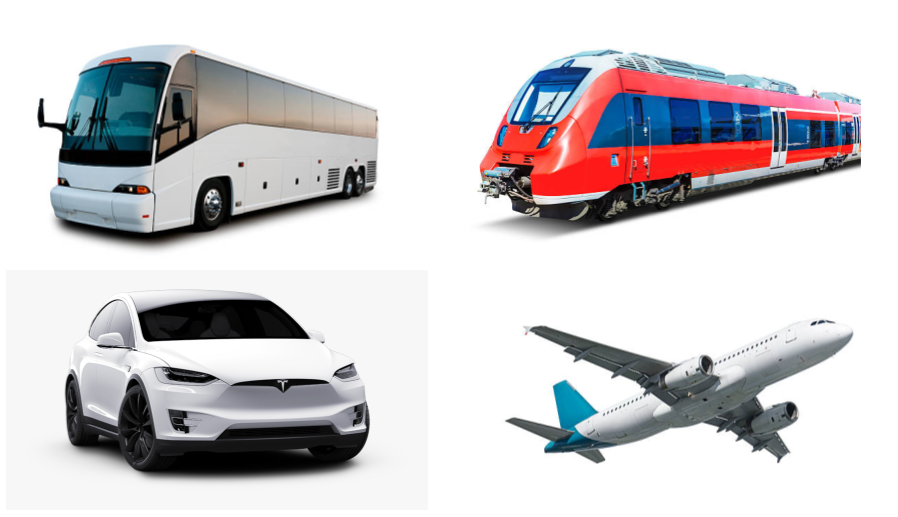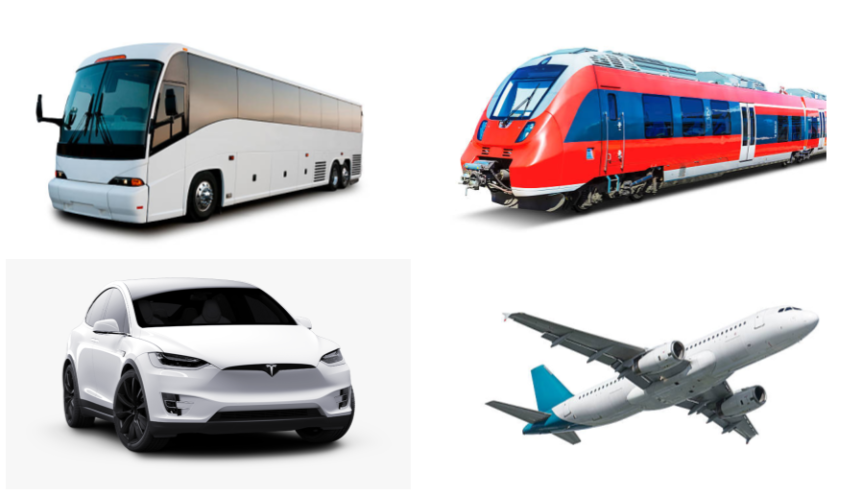See the most sustainable modes of transport for travelling overseas and longer distances……

As humans travel is in our DNA and for millennia we have covered vast distances to find new habitats. Travel has changed quite a bit since then, however, with the invention of combustion engines and even more so over the last 30 years with cheap air travel which has accelerated globalisation.
However, the expansion of cheap global travel comes at a cost and poses a problem as flying, which is the most common mode of transport for travelling long distances creates a relatively large amount of Co2 carbon emissions which is harmful to the environment and one of the biggest causes of global warming.
So what are some alternatives to flying and the most environmentally friendly way to travel long distances?
According to the European Environment Agency, the most environmentally friendly way to travel long distances is by train as it emits 14 grams of Co2 emissions per passenger kilometre compared to 42 grams of Co2 for a car carrying 4 people and 68 grams for a bus carrying 13 people.
The least environmentally way to travel overseas is by aeroplane which emits 285 grams of Co2 per passenger kilometre.
In this article, I will go into the most sustainable modes of transport in more detail along with train and bus providers which have extensive networks, aiding long-distance travel and some of the things you can do to mitigate your carbon footprint if time is short and you really do have to fly.
Contents:
- What do we mean by environmentally friendly?
- Most Environmentally Friendly Way To Travel Longer Distances
- Key takeaway
What do we mean by environmentally friendly?
Before we dive into the most sustainable ways to travel long distances it’s worth looking at what environments friendly actually means in terms of travel.
In general terms, environmental friendly means reducing, minimising or mitigating the harm done to the natural environment as a result of unnatural human behaviour.
In practical terms and in the case of travel it’s the emissions or carbon footprint, you emit getting from point A to B such as travelling by plane and how you consume and interact with the environment in which you visit.
Most Environmentally Friendly Way To Travel Longer Distances
1. Train
The most environmentally friendly mode of transport to travel long distances by a considerable margin is by train. On average a passenger train carrying 156 people emits only 14 grams of Co2 emissions per passenger kilometre, compared to 285 grams of Co2 per kilometre for a passenger airline carrying 88 passengers
Rail networks are also very extensive meaning you can travel long distances over land and thus across continents. for example, if you are travelling within the EU or outside it from places like the United kingdom you can buy a “Flexi” or “Continuous” pass from Eurail which grants you access to 40,000 locations spread across 33 European counties.
So you could hop on a train at Dover and get all the way to Athens in Greece without ever having to set foot on an aeroplane.
2. Car
The second most environmentally friendly way to travel overseas is by car. Even running on a diesel or petrol engine a small car carrying 4 people emits 42 grams of Co2 per passenger kilometre and a larger car such as a people carrier with the same number of occupants emits 55 grams.
Electric battery car technology makes travelling even more sustainable as the Co2 produced by electric vehicles becomes carbon neutral (Carbon neutrality is a state of net-zero carbon emissions)
For example, on average current electric vehicles can travel 250 miles on one charge (Tesla’s can achieve 350 miles) and emits zero Co2 (fully electric cars only emits water vapour.
Electric cars may not be currently feasible for travelling long distances as infrastructure for charging tends to vary by location. However, as the technology progresses and becomes more ubiquitous travelling long distances sustainably will become more of a viable solution.
3. Bus
The third most eco-friendly way to travel abroad and a good way to complement train journeys is by bus. Passenger buses produce slightly more co2 than trains at 68 grams of Co2 per passenger with a bus carrying approximately 13 people.
Again bus route networks are extensively throughout most continents especially in North America, Europe and South-East Asia.
Flixbus is a German-based bus company which offers intercity bus services in Europe, North America and Brazil. You can get a coach from Victoria Coach station in London all the way to Istanbul in Turkey using their bus networks. And if you are in North America you can travel by Flixbus from Las Vegas on the west coast all the way to New York on the East coast.
4. Aeroplane
Flying is the least environmentally friendly way to travel and a plane carrying 88 passengers emit a whopping 285 grams of Co2 per passenger mile.
If time is at a premium and you are not able to travel overseas or long distances overland by train, bus or car then there are a few things you can do to reduce your carbon footprint.
Firstly choose an airline that has some eco-friendly credentials. For example, Atmosfair compares and ranks 125 airlines around the world based on “Eco Points” – it found European airlines tend to be more eco-conscious, with 7 airlines in the top 10 with Tui topping the list with 79.3 eco points.
On the other end of the spectrum, Atmosfair found US and North American airlines tend to perform the worst with three US airlines in the bottom 10.
Secondly, choose direct routes to travel to your destination. Planes take more fuel to take off as they need that extra energy to lift a heavy load than when they are in the air on autopilot
Thirdly, choose a destination closer to home which means flying short distances and emitting less Co2.
Source: Atmosfair Airline Index 2018

Related articles:
Key Takeaways
Trains are the most eco-friendly way (and probably quickest after flying) to travel long distances, with cars and buses coming in at second and third.
Granted taking a train, bus or driving overseas do take longer than hopping on a plane and flying thousands of miles in hours and not everyone has the luxury of having time to do this.
However, if you do have the time then great but if not there are things you can do to mitigate how much carbon you produce.
Things like combining modes of transport such as flying part of the way and getting a train to your final destination; choosing locations that are closer to home which means flying shorter distances and looking at how the airline you want to fly with performs on the Eco-Index.


